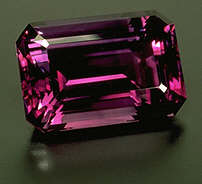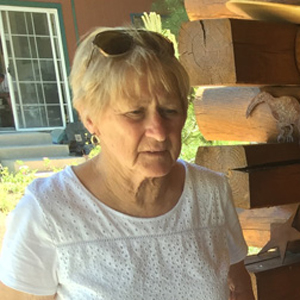Quartz: Crystalline and Chalcedonies
Quartz is generally divided into two groups: the transparent crystalline varieties and the translucent to opaque chalcedonies that are microcrystalline forms of quartz. There are many different varieties in these two types but they have one thing in common: they are low in cost. Some are downright cheap! Quartz is one of the most abundant minerals on the earth's crust. It is also one of the most interesting.
7 Minute Read
Quartz is generally divided into two groups: the transparent crystalline varieties and the translucent to opaque chalcedonies that are microcrystalline forms of quartz.
Crystalline and Chalcedonies
There are many different varieties in these two types but they have one thing in common: they are low in cost. Some are downright cheap! Quartz is one of the most abundant minerals on the earth's crust. It is also one of the most interesting.
| Colors: | Colorless, white, violet, yellow, orange, green, brown, pink, gray, black and pale blue |
| R.I.: | 1.54 - 1.55 |
| Durability: | Fairly tough |
| S.G.: | 2.65 - 2.91 |
| Treatment: | Some varieties dyed, heated or irradiated |
| Hardness: | 7 |
| Availability: | Abundant in many sizes |
| Localities: | Brazil, India, Australia, Zambia, Uruguay, and many more |
| Price: | Low |
| Common shapes: | Everything is possible |
Crystalline Quartz Varieties
Amethyst
Amethyst is the queen of the quartz varieties and in better qualities it is the most expensive of the quartzes. Amethyst ranges from pale to dark violet. The finest qualities of amethyst are a medium dark violet with a strong secondary red color. Darker shades of amethyst may appear slightly differently under different light sources. Amethyst of all qualities are available in all sizes and shapes. Light amethyst will be very low in per carat prices with the finest qualities still well under $l00 per carat. Darker amethyst of any size will have color zoning. This may not be visible without extensive examination. Often the zoning consists of areas of red violet and areas of blue violet, this combination can enrich the appearance of the stone. Sometimes the zoning is easily visible and detracts from the beauty of the stone. If the zoning is unsightly the value is lessened.
Citrine
Citrine is the yellow to golden orange variety of quartz. Although citrine crystals exist in nature, most commercial citrine stones are the result of heating amethyst. Citrine is often mistakenly called "topaz," be sure to clarify this point with the seller. Citrine can vary in color from a sunny lemon yellow to orange brown. Dark brownish-orange stones are described as "Rio Grande Citrine" or "Madeira citrine" for golden brown shades. Citrine can be found in all sizes and shapes; prices should fall in the low end.
Ametrine
Ametrine is a bi-color variety that is part amethyst colored and part citrine colored. It was first discovered in Bolivia. Generally ametrine is cut into octagon or emerald cut shapes to emphasize the two colors. Ametrine has been carved into some very interesting gem art works. Prices will start in the low end and go to moderate price per carat for exceptional pieces.
Smoky Quartz
Smoky Quartz is brown transparent quartz of all shades; it generally has a slightly grayish cast. It is much easier to find smoky quartz in large sizes; it is not always economically feasible to cut it into small sizes. Prices should always be very inexpensive.
Rose Quartz
Rose Quartz is the pink variety of quartz; it is rarely transparent. Facet grade material will usually be a bit "misty" in appearance. Rose quartz is used extensively for beads and carvings but faceted material may be hard to find. Still it is on the very low end of the price scale.
Colorless Quartz
Colorless Quartz also called "rock crystal" simply lacks interest as a jewelry stone. Even when it is well cut it lacks brilliance. Occasionally quartz will contain some interesting inclusions that can increase its appeal. Colorless quartz is occasionally found with rutile needles inside which look like as long golden threads sometimes arranged in a pattern. This is called rutilated quartz and is popular in art jewelry. Black tourmaline crystals can also create a pattern inside colorless quartz for a unique appearing gemstone. Other mineral inclusions are possible. In rare cases, quartz will contain gold. Most gold bearing quartz is milky white rather than transparent. These included quartz materials are being used for carvings and can be gemstone art works.
Beads made from quartz have been popular for a hundred or so years; these are often faceted into appealing shapes. Again these items are low in price. If a gem is carved into an "art work" the quality of the work may be what you are paying for rather than the raw material; these items will have to be valued accordingly.
Tiger's Eye
Tiger's Eye is a quartz with asbestos inclusions; this gives it subtle silky appearance. Generally it is golden to brown in color; it can also be dyed. Blue material is called crocidolite. Quartz also comes in cat's-eye form; it is usually a golden yellow.
Star Quartz
Star Quartz is a fascinating stone; the quartz may be colorless or pink. The stars are six-rayed and roll around the stone as it is moved. Sometimes star quartz is cut into spheres which are really fun.
Chalcedony Quartz Varieties
The varieties of gem materials in the chalcedony group will be translucent to opaque. They are very inexpensive unless carved as an artwork. They are commonly cut into beads, carved or used as decorative objects.
Chalcedony as a variety is a light grayish blue color; it is sometimes banded. Banded chalcedonies are called "agates" or "onyx". Stones with swirly white bands in blue chalcedony are called blue lace agate.
Carnelian
Carnelian is a translucent orange variety of chalcedony; it has been treasured for beads or carved into amulets for thousands of years. It does occur in a soft natural orange color but most of the material on the market today is dyed.
Bloodstone
Bloodstone is an opaque dark green variety of chalcedony with red spots. For centuries it was treasured as a healing gemstone. It can be difficult to find today: perhaps it is just too inexpensive for cutters and dealers to handle.
Chrysoprase
Chrysoprase is a brilliant translucent green variety of chalcedony. It is the most valued of the chalcedony materials. Most of it is mined in Australia. Very fine chrysoprase beads if they are 8 millimeters or more in size will be in the moderate price range for a strand. Very large or very exceptional ones could be more.
This chalcedony resembles very fine jade and is incorrectly called "Australian jade". The best chrysoprase has an even translucency and is a bright green, yellowish material or less translucent material falls in value. Chrysoprase is also used for inlay and is cut into cabochons. A cabochon of chrysoprase is still very affordable.
Sard
Sard is a semi-translucent brown chalcedony variety. It was used by the ancients for magnificent carved amulets and signets. Otherwise by itself it's a bit dull. Sardonyx is banded brown and white chalcedony; it was used for carved cameos; these can be rather special when the carving is fine quality.
Black Onyx
Black Onyx is dyed chalcedony; it simply does not exist in this color in nature. Onyx in other contexts can refer to banded materials or in the trade it may refer to chalcedonies that have been dyed.
Fire Agate
Fire Agate is a brown bodied stone containing bitroidal appearing spots in yellow, green, and orange. It is mined in Mexico. It has become harder to find and has appreciated in price, but it is still low per carat.
There are many other varieties of agates with pattern, pictures, etc. They may be carved into "picture stones", beads, etc. Most are still in the low price range; each of these pieces are unique. Very exceptional picture agate material may command a higher price if very unusual. The buyer must and decide what it is worth.
Chrysocolla
Chrysocolla in quartz is a lovely robin's eye blue color that resembles turquoise. It may be an even blue color or mottled. Chrysocolla is a copper mineral that is very soft and not very usable by itself. When it exists as fine particles in quartz it has good durability.
Jaspers
Jaspes are opaque gems in quarts family; they may be dark red, yellow, green, or brown. The material is often patterned and of interest as a gem material. Believe it or not there are more varieties in the quartz/chalcedony group, but we don't want to go on forever. Just know that quartz gems are durable, affordable and can be very attractive.
Treatment
Citrine generally always came out of the ground as amethyst and then was heated to become the yellow hued citrine. Amethyst that is too dark will be heated to lighten it but this does not require heating the stone as hot as when it turns into citrine.
The chalcedonies can be dyed. Often they are dyed into very bright colors and used for bowls, handles for flatware, and for beads. Dyed chalcedony are called onyx. Rose quartz is sometimes dyed to intensify the color. This can usually be spotted under close examination: streaks of pink dye are visible in cracks. Occasionally quartz is irradiated into smoky quartz. These treatments are all permanent and, except for the dyeing, are not detectable.
Related Articles:
Gem Dealer's Secret: Handbook for the Gem Buyer - Table of Contents
You assume all responsibility and risk for the use of the safety resources available on or through this web page. The International Gem Society LLC does not assume any liability for the materials, information and opinions provided on, or available through, this web page. No advice or information provided by this website shall create any warranty. Reliance on such advice, information or the content of this web page is solely at your own risk, including without limitation any safety guidelines, resources or precautions, or any other information related to safety that may be available on or through this web page. The International Gem Society LLC disclaims any liability for injury, death or damages resulting from the use thereof.
The All-In-One Jewelry Making Solution At Your Fingertips
When you join the Ganoksin community, you get the tools you need to take your work to the next level.
Trusted Jewelry Making Information & Techniques
Sign up to receive the latest articles, techniques, and inspirations with our free newsletter.



